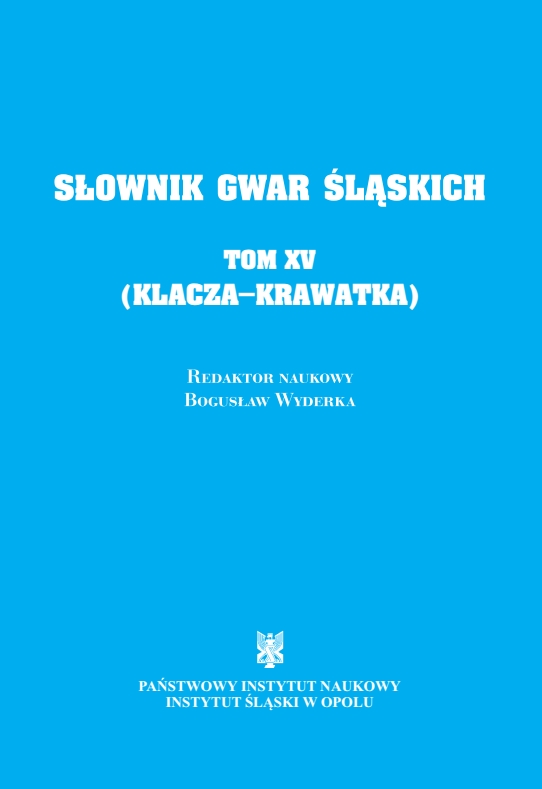
Słownik Gwar Śląskich, tom XV (KLACZA - KRAWATKA)
"Glossary of Silesian Dialects" is the result of many years of scientific work of several generations of linguists from the Silesian Institute in Opole, Poland.
More...We kindly inform you that, as long as the subject affiliation of our 300.000+ articles is in progress, you might get unsufficient or no results on your third level or second level search. In this case, please broaden your search criteria.

"Glossary of Silesian Dialects" is the result of many years of scientific work of several generations of linguists from the Silesian Institute in Opole, Poland.
More...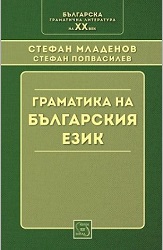
With the series "Bulgarian Grammar Literature of the 20th Century", East-West publishing house aims to familiarize the Bulgarian reader with the outstanding contribution of prominent Bulgarian linguists in the development and formation of our literary linguistic norms in the 20th century, as well as in the development of Bulgarian linguistic science in general. All the editions included in here have been out of print long ago or difficult to find bibliographically. The first two grammars in the series will be phototype editions. This will enable Bulgarian specialists-linguists to look into the history of the development of the Bulgarian grammar literature from the beginning of the 20th century, which predetermined the further development of Bulgarian and general linguistics, showed its valuable contribution to our national cultural treasure.
More...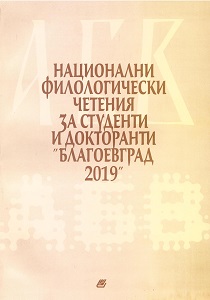
Albanian is an Indo-European language which forms its own branch in the Indo-European family and has no close relatives. It is spoken by about 7.6 million people, mainly in Albania and Kosovo, and also in parts of Italy, Macedonia, Montenegro, Greece, Romania, Serbia, and the diaspora. Albanian is thought by some scholars to be a descendant of Illyrian, a group of Indo-European languages spoken in the Western Balkans until perhaps the 6th century AD. Others believe that Albanian descended from Thracian or Dacian, Indo-European languages spoken in parts of the Balkans until about the 5th century AD. Albanian absorbed some words from Greek and many words from Latin between the 2nd century BC and the 5th century AD. After that, it was influenced by the languages of Slavic and Germanic tribes who settled in the Balkans. There were also borrowings from the Proto Romanians or Vlachs from the 9th century AD. A few brief written records are preserved from the 15th century, the first being a baptismal formula from 1462. The scattering of books produced in the 16th and 17th centuries originated largely in the Gheg area and reflect Roman Catholic missionary activities. Much of the small stream of literature in the 19th century was produced by exiles. Perhaps the earliest purely literary work of any extent is the 18th-century poetry of Gjul Variboba, of the enclave at San Giorgio, in Calabria. Some literary production continued through the 19th century in the Italian enclaves, but no similar activity is recorded in the Greek areas. All these early historical documents show a language that differs little from the current language. The documents from different regions and times exhibit marked dialect peculiarities, however, they often have a value for linguistic study that greatly outweighs their literary merit. The standard language, written in a standard Roman style orthography adopted in 1909, was based on the south Gheg dialect of Elbasan from the beginning of the Albanian state until World War II and since, has been modeled on Tosk. The Albanian alphabet, that is still in use today, was approved in the Congress of Manastir and it is composed of two main dialects: Gheg and Tosk
More...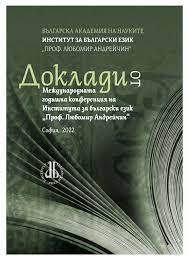
The subject of the article is the origin and the language of the fragments attributed to Athanasius of Alexandria in the 15th century Miscellany from Hilandar monastery HM. SMS. 474, dated to 1385 – 1395. The Athanasius’ fragments about the origin of the Holy Spirit include: а) an incipit and a text from an unidentified anti-Latin Sermon; the incipit and the beginning of the Sermon are quoted by Basil the Great in his Homily XXIV against the Arians, Savellians and Eunomians; b) a Quote from the Pseudo-Athanasian First Dialogue contra Macedonius, 5.11 – 13; c) a Quote from Athanasius’ Epistula ad Serapionem, I.2. The same three fragments are attested in the unpublished Codex 41 of the Monastery of the Holy Trinity in Pljevlja, copied around 1400. The identical content and the lanquage of HM. SMS. 474 and Codex 41 testify to a common origin. The Athanasius’ fragments are placed together with a quote from Basil the Great, Against Eunomius, and Barlaam of Calabrias on the principles of the discussion (начала), as well as many commentaries on these fragments, that are up to date in the 14th century. It can be assumed that some Greek collection used for the Slavonic translation of this part of HM. SMS. 474 presents stored documentation of the disputes in Constantinople during 1334 – 1337 between the papal legates and their orthodox opponents Gregory Palamas and Barlaam of Calabria.
More...
The article examines the vocabulary of the two Old Bulgarian translations of Orations of St. Gregory of Nazianzus. The analysis is focused on the transmission of a biblical reference from the prophet Jeremiah in the context of everyday life of the Bulgarian medieval society. A new hypothesis is proposed for the understanding of дъмьии – a lexeme unique for Slavonic medieval literature.
More...
The article aims at examining several rare words, attested in a) notes left by the copyists of Old Bulgarian manuscripts from the 10th – 11th c., and b) in inscriptions from the same period. In some cases a new interpretation of the analyzed material is performed, and in others such is offered for the first time.
More...
The paper presents data about a newly-found copy of The Blessing of the Waters on the Eve of Epiphany, the text of which has been published only partially in the edition of the Treskavec Euchologium from XIII century, without being identified. The copy is the most thorough text of the divine service from this century found until now, which demonstrates textual and lexical similarity to the Glagolitic Euchologium Sinaiticum from X – XI century. It was created in the southwest Bulgarian monastery by the priest Mihail for the needs of Orthodox divine services and was written directly over the Greek text.
More...
The text analyzes some peculiarities of the consonant system of the Croatian vita of St. Catherine Legenda sv. Katarine divice according to manuscript I c 6 from the Archives of the Croatian Academy of Sciences and Arts. The selected cases prove once again the Chakavian dialect of the text. The analysis is a contribution to the history of the use of the Latin script to record the vernacular Croatian in the XIV-XV centuries.
More...
This study presents the linguistic and semantic realizations of the concept “living places” in the New Bulgarian damascenes from the 17th century. A system of words and collocations and their use in different contexts are analyzed in view of their connection with Christian culture and with the medieval picture of the world. The process of enrichment of the names for living places in the history of the Bulgarian language and of the changes in the conceptual content of the words and collocations is followed.
More...
The article presents language material from the collection Iosiph Bradati Празници бабыни илы ѡ бабихъ баснехъ, also known as the Women’s collection. The present study focuses on some characteristics of the female presence in the popular collection of the Bulgarian damascinar writer.
More...
The report is dedicated to a newly discovered manuscript from the 19th century in Rakovski, written by Father Eduardo of Torino and represents a notarial book in which agreements and wills of Bulgarian Catholics are recorded. The manuscript belongs to the literature of Bulgarian Catholics, is not known to scientists and the next report presents for the first time data on its content and features. The discovery enriches the idea of this part of Bulgarian literature, as this type of notarial book has not been discovered, described and researched so far, and it contains valuable information about public relations between the representatives of this part of the Bulgarian people. The manuscript adds important data to the knowledge of the work of Father Eduardo of Torino, who wrote in modern Bulgarian language among Bulgarian Catholics in the second half of the 19th century.
More...
The paper presents new data for Bulgarian language in favor of the Bulgarian linguists position toward the Macedonian language which are based on the analysis of the bibliographic source titles included in the first World Slavic Linguistics Bibliography published periodically in „Rocznik Slawistyczny“ from 1908. The analysis is focused on the structure of the main bibliography, and summarizes the source titles which are related to Old Church Slavonic Language and to Bulgarian dialects. It is particularly outlined that there are no titles or sources on Macedonian language included in the first World Slavic Linguistics Bibliography of „Rocznik Slawistyczny“, 1908.
More...
As a bright marker of the author’s idiolect, the оccasionalisms in the rhythmic and narrative works of Stoyan Mihaylovski are original and colourful verbal representations of the author’s insights, emotions and sociopolitical assessments. In the present study 32 hapax legomena and rare words have been lemmatized and analyzed in alphabetical order – from letter N to letter Yа. They have been excerpted from several Stoyan Mihaylovski’s works. Тhese lexemes have been compared with more than 40 Old Bulgarian, Middle Bulgarian and Modern Bulgarian and Russian texts (originated in the XI–XX century) to highlight their originality. Criteria for this analysis are: morphemic structure, denotative and connotative semantics, word formative ways, stylistic scope of use, their synonym corelats and the diffusion of occasionalisms in the Modern Bulgarian language.
More...
In the text I report on documents from the personal archive of the writer Hristo Gerchev, stored in the State Archives - Shumen, related to the history of the Bulgarian literary language. The most important of them is the letter I read from 1910 from Prof. Benyo Tsonev to his student Hristo Gerchev.
More...
The article presents the names pop / papa / papas of Christian religious persons included in the anthroponymy of the Christian population of Nevrokopska Kaza, according to data from Ottoman tax registers from the 16th century. A comparison is made with material from Ottoman registers for Western Thrace and the Southern Rhodopes. A name of domestic, Bulgarian origin, pop is the most widespread in the lists of the Nevrokop region.
More...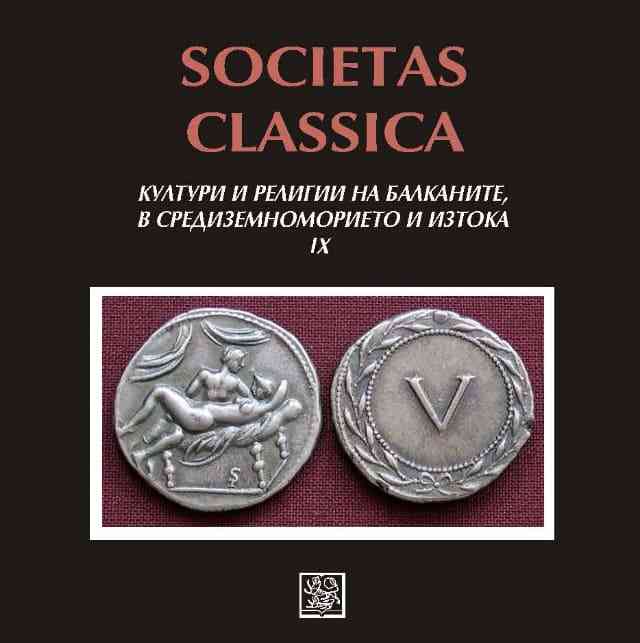
The paper deals with the Greek language question as well as the specific historic development of the Greek language. Special attention is paid to diglossia and the problems it brings about. The study highlights the points of view of the proponents of Dimotiki and Katharevousa, their contribution to the development of the language question and the theory of the unity of the Greek language. Last but not least, the paper also raises the issue of the arguments concerning the name of the Greek language (Dimotiki or Modern Greek) and its teaching.
More...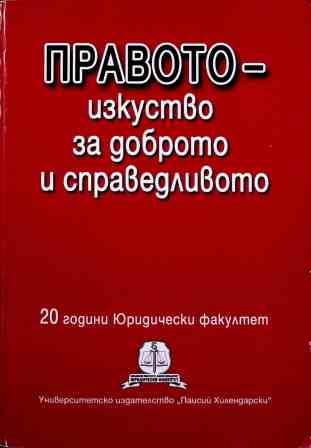
When it comes to history, the world of legal discourse in post-1989 transitions within Eastern and Central Europe turns into a unique laboratory of transformations that impact how political and legal systems engage sociocultural adaptations, political rhetoric (discourse) and the notion of audience/publics under novel understandings of national and international history in the area. Such public arena of new European democracies has experienced a wide range of political and legal transitions of official vocabularies, from reminiscent post-World War II or later Soviet – style official rhetoric to nuanced authoritarian and national socialist discourse, into the more fluid democratically aligned linguistic and cultural vocabularies of national identity. It is within this context of political and legal change this essay is situated in order to examine some challenges that legal vocabularies and policymaking process carry in this transformative era. The research question for this essay does not focus on which words or which vocabularies get to be featured within the changes of legal discourse from communist to post-communist era. Rather, the study examines intends some of the critical-cultural perspectives that delineate legitimacy of post-1989 public and official discourse, taking into account how vocabularies carry within word-usage culturally-embedded arguments that inhabit discourse of political, legal, and democratic action.
More...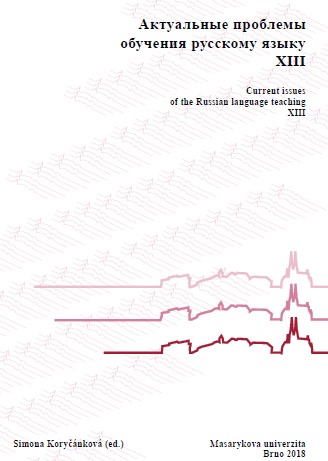
The XVIII century in Russia had become a new stage in the development of science and education. At this time, the achievements of European scientists are being creatively revised, the Academy of Sciences and the University are being opened, scientific works are being actively published. M. V. Lomonosov, V. E. Adodurov, A. A. Barsov, V. K. Trediakovsky, A. P. Sumarokov, V. N. Tatishchev, N. G. Kurganov, V. P. Svetov, P. I. Sokolov, A. S. Nikolsky, Apollos are encyclopedic scientists of the XVIII century who had made a revolution in Russian linguistics. In this article we review the achievements of the linguists in the XVIII century on the field of the doctrine about the means and methods of word formation.The scientists in the Enlightenment had seen the system device of word formation, understood the difference between morphological, word-formative, formative and word-changing levels, engaged in the development of the terminological apparatus of derivatology and morphemics. At this time, many important word-formative definitions appeared. It is important that during this period an attempt to comprehend and define the very essence of word formation was made, scientists began to differentiate the meaning of root and affixal morphemes. M. V. Lomonosov compared the word-formative capabilities of different languages and came to the conclusion about the wealth of word-formative resources of the Russian language, and Apollos conducted word-formative analysis. Thus, the doctrine of the means and methods of Russian word formation in the XVIII century had become relevant and rapidly developed.
More...
In this paper, I examine Alexios’s farewell letter to his parents and his bride, as displayed in the poem The Life of Saint Alexios the Man of God (1833) written by Konstantin Ognjanović. The specificities of the Slavo-Bulgarian type of Bulgarian literary language in the first half of the 19th century as represented in the letter in question are analyzed as well. In addition, I also aim to reveal the genre characteristics of Alexios’s letter.
More...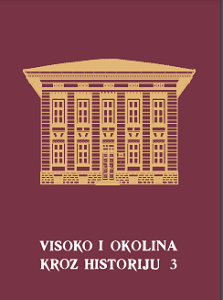
Aneksija Bosne i Hercegovine rezultirala je krupnim promjenama u svim segmentima bosanskohercegovačkog društva. Nakon početnog razdoblja stagnacije, koje je obilježeno snažnim otporom prema Austro-Ugarskoj Monarhiji, BiH se postepeno uključuje u zapadnoevropski civilizacijski krug. Kroz korjenite promjene u obrazovnom sistemu te formiranje brojnih kulturno-prosvjetnih društava, kao i čitaonica, počinje se odvijati intenzivan kulturni život. Međutim, društvene i kulturne promjene nastale nakon aneksije stvorile su svojevrstan procjep u kojem se našlo kompletno bosanskohercegovačko društvo. S jedne strane višesto ljetno naslijeđe iz prethodnog perioda, koje je u značajnoj mjeri oblikovalo sve sfere društveno-političkog i kulturnog života, dok su, s druge strane, u skladu s političkim ciljevima nove uprave, promovirane zapadnoevropske civilizacijske kulturne tekovine. Zalaganja austrougarske vlasti za model svjetovnog obrazovanja, kao i afirmiranje štamparske i izdavačke djelatnosti, postepeno će mijenjati i obrazovni i kulturni život bosanskohercegovačke sredine. Međutim, neophodno je istaći da uvedene promjene, koje su rezultat dobrog poznavanja složenog stanja bosanskohercegovačkog društva, nisu bile radikalne te je u prvim godinama uprave vladao relativno tolerantan odnos prema zatečenom, što se vidi i u odnosu prema pisanoj riječi u svim njenim pojavnostima. Naime, iako je ulagala značajan napor na uvođenju svjetovnog školstva u BiH, što je podrazumijevalo i afirmaciju latiničnog pisma u različitim sferama upotrebe, austrougarska vlast nije imala represivne mjere prema konfesionalnom obrazovanju i oblicima pisane riječi koji su ukorijenjeni u prethodnom periodu. To se posebno odnosi na muslimansko stanovništvo kod kojeg vlada otpor prema kulturi koju percipiraju kao neprijateljsku. Sličan odnos prema austrougarskoj upravi vlada i među pravoslavnim stanovništvom, naročito u vrijeme Benjamina Kállaya (1882–1903), koji pokušava neutralizirati utjecaje koji su dolazili iz Srbije. Suprotno tome, relativno brža integracija katoličkog stanovništva u novi kulturni svjetonazor potaknuta je, između ostaloga, i činjenicom da je riječ o zapadnokršćanskoj civilizaciji, dok je franjevačka kulturna tradicija, koja je i ranije baštinila latinično pismo, kao i sveukupna djelatnost franjevaca na polju pokretanja časopisa još u osmanskom periodu, otvorila put ka bržem uključivanju katoličkog stanovništva u nove tokove pisane riječi. U skladu s navedenim može se konstatirati da forme pisane riječi ne samo u austrougarskom periodu nego i u prvim decenijama XX st. imaju naglašenu konfesionalnu orijentaciju.
More...